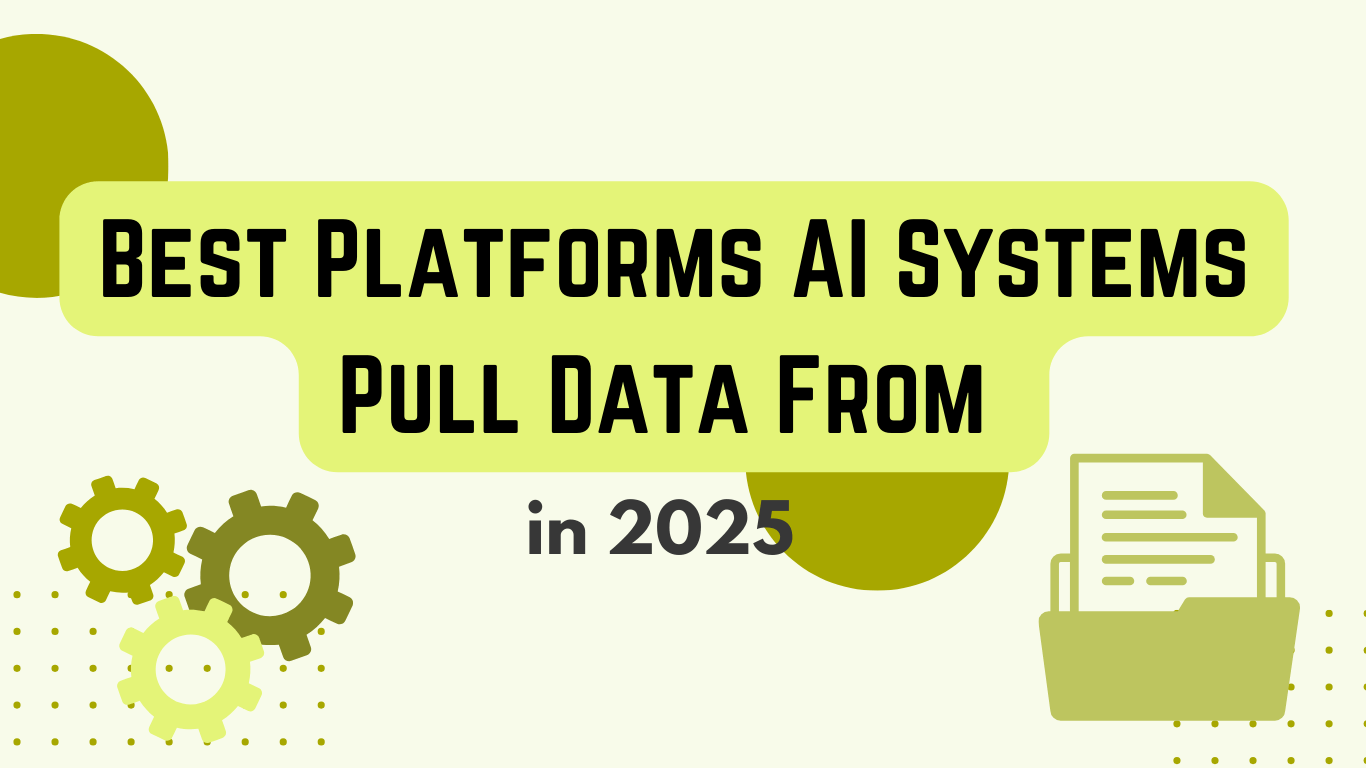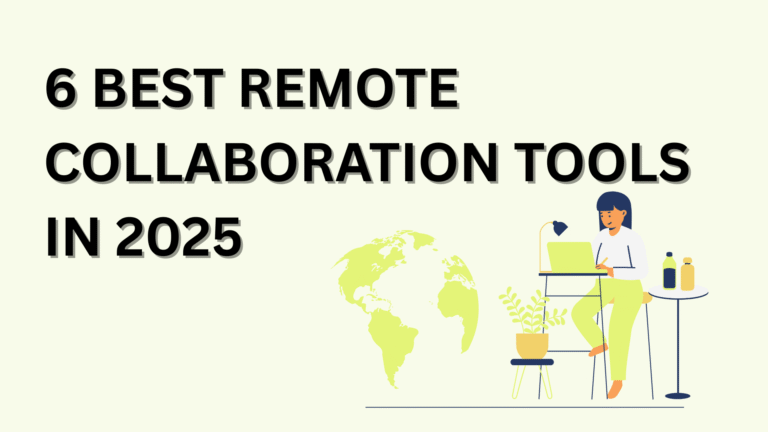The top data platforms powering AI systems in 2025 are shaping up clear: Microsoft’s Azure Synapse Analytics and Informatica’s Intelligent Data Platform round out the top five, each bringing their own specialized tools to the table.
But here’s the reality check, even with these powerhouse platforms, companies still stumble. Bad data fed into good systems is like putting sugar in a gas tank. The difference between AI that delivers and AI that disappoints isn’t just about picking the right platform, it’s about what goes into it.
Want to see how these platforms stack up? Keep reading.
Key Takeaways
- Most companies save nearly two-thirds of their time with data platforms that handle the messy cleanup work automatically.
- A good AI system connects to different data sources without needing complex coding, and updates information as it changes.
- Look for platforms that use open-source tools and smart enrichment features, which keeps your data secure while following all the rules.
Leading AI Data Integration Platforms in 2025: Top Platforms for Pulling AI System Data
Data feeds AI like gasoline feeds a car, you can’t run either without the right fuel. The platforms pulling data for AI in 2025 don’t just grab information anymore, they’re smart systems that clean it up and make sense of it all. Here’s a look at the platforms that actually work.
What are the Key AI Data Integration Platforms for 2025?
| Platform | Strengths | Key Features | Best For |
| Informatica | Long-standing leader with ~40% market share, trusted by 5,000+ enterprises | AI-powered data cleaning, movement, and integration; reliable cloud platform | Enterprises needing robust, proven AI data management |
| SCIKIQ | Emerging disruptor with bold performance claims | No-code integration with 100+ data sources; 60% faster setup; up to 80% cost savings | Companies seeking low-cost, fast, and simple integration |
| Fivetran | Automated, adaptive ETL pipelines | Real-time updates; self-healing data pipelines that adjust to changes | Large companies needing resilient, automated data flow |
| Microsoft Azure Synapse Analytics | Handles massive global data (exabytes daily) | AI-driven big data processing; global collaboration tools; cost efficiency | Enterprises managing huge datasets and distributed teams |
How Does Informatica Enable AI Data Management?
Informatica’s been around the block a few times, and it shows. Their cloud platform uses AI to handle all the boring stuff, cleaning data, moving it around, making sure everything fits together. It doesn’t matter if the data’s neat and organized or a complete mess, Informatica deals with it.
They’ve got about 40% of the market locked down, with more than 5,000 big companies trusting them to keep their data flowing.It’s like having a really smart assistant who makes sure your AI always has clean, reliable information to work with and allows development of custom AI solutions by experienced companies like Aloa.
What Makes SCIKIQ a Leading AI-Powered Data Integration Tool?
SCIKIQ’s the new kid on the block who’s making waves. They say they can cut down the time you spend setting things up by 60% and save you 80% on costs, pretty bold claims, but they’re backing it up with results.
The platform connects to more than 100 different data sources without making you write a single line of code. For companies tired of dealing with technical headaches, SCIKIQ might be worth a look.
How Does Fivetran Optimize Automated ETL Pipelines for AI?
Think of Fivetran as a really smart conveyor belt for your data. It moves information from one place to another, but here’s the cool part, it figures out what to do when things change without anyone having to tell it.
The system updates itself in real-time, which means your AI always has fresh data to work with. It’s particularly good for bigger companies that can’t afford to have their data pipeline break down.
Why Is Microsoft Azure Synapse Analytics Crucial for Big Data AI Integration?
Azure Synapse Analytics is Microsoft’s heavy hitter in the data world. It processes massive amounts of information (we’re talking exabytes, that’s a million terabytes) every single day.
For big companies trying to cut costs while keeping their teams working together across the globe, Azure Synapse makes sense. It’s got AI built right in to help spot patterns faster, which means better decisions based on better data.
How Do Specialized Platforms Enhance AI Data Collection and Enrichment in 2025?
Not all data’s created equal, some of it needs special handling. From sensors in factories to social media posts, there’s a whole world of information out there that regular data tools just can’t handle properly.
| Platform / Tool | Strengths | Key Features | Best For |
| IBM DataStage | Strong in IoT and governance | Processes sensor/IoT data efficiently; reduces data handling workload by 50% | Factories, building systems, IoT-heavy industries |
| Airbyte | Open-source flexibility + enterprise-grade security | 600+ data connectors; customizable; 24/7 data flow | Companies wanting control, customization, and vendor independence |
| Browse AI | Simple web data collection | Point-and-click web scraping; no IT help needed | Marketing teams needing quick access to fresh web data |
| Rows | Lightweight multi-source integration | Connects to 50+ sources (social, databases, etc.); spreadsheet-like ease | Teams that want spreadsheet-based AI data access |
| Tactic | Automated research assistant | Scans web pages for customer & company insights | Businesses needing ongoing competitive/customer intelligence |
| Databar AI | Large-scale enrichment capacity | 1,000+ APIs; 120+ data sources; pulls stock, social, trends | Companies seeking wide, enriched, real-time datasets |
What Are IBM DataStage’s Capabilities in IoT and Data Governance?
IBM DataStage does one thing really well: it makes sense of all those signals coming from sensors and smart devices. Instead of drowning in numbers, it turns that mess into something useful.
The numbers don’t lie, companies using DataStage cut their data handling work in half. For teams already using Google Sheets or storing meeting notes in Google Docs, connecting DataStage makes analysis more practical and accessible.
How Does Airbyte Combine Open-Source Flexibility with Enterprise Security?
Airbyte’s got this neat trick, it’s both free to tinker with and tough as nails when it comes to security. With over 600 ways to connect different systems, it keeps data flowing 24/7.
For developers, that means smoother Code Review inside VS Code or easier syncing with project management platforms. Companies love it because they’re not stuck with one vendor’s way of doing things, keeping both flexibility and security in balance.
What Roles Do Browse AI and Rows Play in AI Data Collection?
Browse AI makes grabbing data from websites as easy as using a spreadsheet. Marketing teams don’t need to bug IT every time they need fresh web data, they just point and click. Rows hooks up to more than 50 different places where data lives, from social media to customer databases.
Between these two, AI systems can enrich a job description, track cold emails, or even supply draft text prompts for AI Chatbots without manual digging.
How Do Tactic and Databar AI Provide Comprehensive Data Enrichment?
Credits: Databar
Tactic reads through tons of web pages and figures out what companies and customers are up to. It’s like having a research assistant who never sleeps, always feeding fresh insights into AI systems.
Databar AI’s got connections, over 1,000 APIs and 120 different data sources. That means AI systems can pull in everything from stock prices to Twitter trends, making their outputs smarter, while also improving how AI assistance supports writing style or sales pitches.
What Features Define the Best Platforms for AI Data Integration in 2025?
The best data platforms in 2025 aren’t just bigger or faster, they’re smarter about handling data in ways that actually make sense for businesses. AI-driven tools connect with everyday systems like VS Code or Notion AI, giving teams both flexibility and AI assistance in managing workflows.
How Do Automation and AI-Driven Transformation Improve Data Quality?
Nobody wants to waste time cleaning up data by hand anymore. The top platforms in 2025 handle the grunt work automatically, with some impressive results:
- Cut manual data work by 60–75% [1]
- Fix errors and standardize formats in real-time
- Update themselves when source data changes
- Clean incoming data without human help
These features mean artificial intelligence models get better information to work with, which leads to stronger results. AI writing tools, for example, can create a polished product description or marketing content with fewer mistakes, all based on cleaner input data.
Why Is Multi-Source Integration and No-Code Accessibility Vital?
Modern AI needs data from all over the place. The best platforms make connecting these pieces together dead simple. They’re offering:
- Drag-and-drop interfaces for non-tech users
- Quick connections to common data sources
- Built-in templates for typical setups
- Visual tools for mapping data flows
This opens the door for marketing teams, Social Media Management staff, and customer service groups. They can set up data flows for Google ads, sales pitches, or even an explainer video script without IT support.
How Do Scalability and Security Influence Platform Selection?
The amount of data flowing through AI systems keeps growing, we’re talking about terabytes becoming petabytes. Good platforms need to:
- Handle sudden spikes in data volume
- Keep everything running smoothly as you grow
- Lock down sensitive information
- Meet strict security standards
- Keep costs reasonable as data grows
That matters whether you’re producing video production projects with AI video generators or tracking internal workflows through project management tools. Both rely on secure, scalable systems.
What Industry-Specific and Compliance Features Are Emerging?
Different industries need different things from their data platforms. Healthcare isn’t like retail, and finance isn’t like manufacturing. The best platforms understand this and offer:
- Pre-built compliance tools for HIPAA, GDPR, and other regulations
- Special features for handling medical records or financial data
- Industry-specific workflows that make sense for different sectors
- Built-in reporting for audits and compliance checks
These features support everything from cold emails in a sales pipeline to building a knowledge base for customer service. The goal is to let companies follow the rules while still using AI-powered tools to improve outcomes.
How Will AI Data Integration Platforms Evolve to Meet Future Enterprise Needs?
The way businesses handle data isn’t standing still. Just like smartphones got smarter over the years, data platforms are growing up too. AI-powered tools now link with Google Sheets, Google Docs, and even Google Calendar, often supported by the best AI calendar and time management tools in 2025, to keep workflows running smoothly. For small businesses, this shift means easier access to AI assistance without needing heavy IT setups.
How Will Generative AI Enhance Data Integration Automation?
Think of generative AI as a really smart quality control manager. It spots problems before they cause headaches, fixes data issues on the fly, and generally keeps things running smooth. These systems are getting good enough to handle stuff that used to need a whole team of data experts. With natural language processing built in, they can turn raw data into cold emails, a job description, or even draft a product description.
When the machines handle the boring stuff, teams can focus on what the data actually means for their business. Plus, they don’t have to worry so much about bad data messing up their AI results. [2]
What Role Will Open-Source and Hybrid Cloud Models Play in Data Integration?
Nobody likes being stuck with one vendor, it’s like being married to your cable company. Open-source platforms let companies change things up when they need to, while hybrid cloud setups mean you can keep sensitive stuff close to home and send the rest to the cloud.
It’s about getting the best of both worlds: the security of your own servers when you need it, and the power of the cloud when that makes more sense. And hey, it usually saves money too. This flexibility also means AI writing tools can pull content from different platforms and match the right writing style across marketing content.
How Will Real-Time Data Synchronization Impact AI System Performance?
When a customer’s talking to your best AI chatbots for websites, waiting 5 minutes for data to update just won’t cut it. Real-time syncing means AI systems always have the latest info to work with, whether that’s inventory levels, customer preferences, or market trends.
Fast data means better decisions. Period. When your AI knows what’s happening right now, not what happened yesterday, it can give answers that actually make sense. That applies to sales pitches, explainer video planning, or even building a knowledge base.
What Emerging Data Sources Will AI Systems Leverage?
The world’s swimming in new kinds of data, from smart fridges telling you you’re out of milk to TikTok trends showing what teens care about this week. AI systems are getting better at making sense of all this stuff.
This means AI-driven tools can understand context better, write more natural-sounding content, and even make videos that don’t look like they came from the dawn of computing.
Video production linked with AI video generators gives businesses sharper product demos and marketing clips. For teams, that translates to better customer engagement and more effective Social Media Management.
Practical Advice
Picking the right data platform for your AI tools isn’t rocket science, but it does need some careful thought. Don’t just go for the one with the most connections, think about how it handles updates, keeps data safe, and follows the rules your industry cares about.
Here at Create & Grow, we’ve seen what works and what doesn’t. We’re not just about getting you those valuable backlinks, we make sure your AI tools have the good, clean data they need to actually help your business. No fancy promises, just practical solutions that get results.
Want to stop wrestling with messy data and start seeing real growth? Drop us a line. We’ll help you build something that actually works for your business, not just another tech headache waiting to happen.
References
- https://www.microsoft.com/en-us/microsoft-cloud/blog/2025/07/24/ai-powered-success-with-1000-stories-of-customer-transformation-and-innovation/
- https://www.sciencedirect.com/science/article/pii/S0148296325001328
Related Articles
- https://createandgrow.com/best-ai-content-writing-tools/
- https://createandgrow.com/10-best-ai-calendar-and-time-management-tools-in-2025/
- https://createandgrow.com/best-ai-chatbots-for-websites/
Frequently Asked Questions




